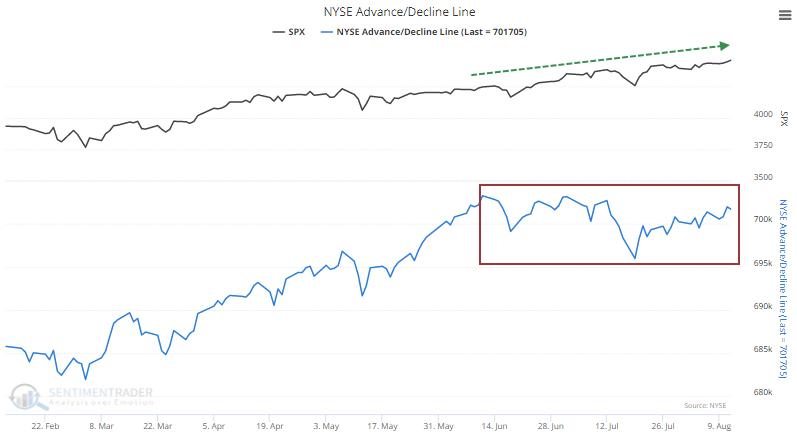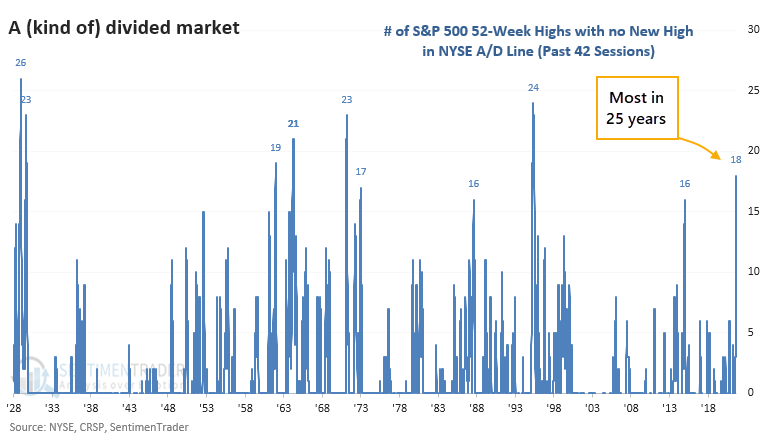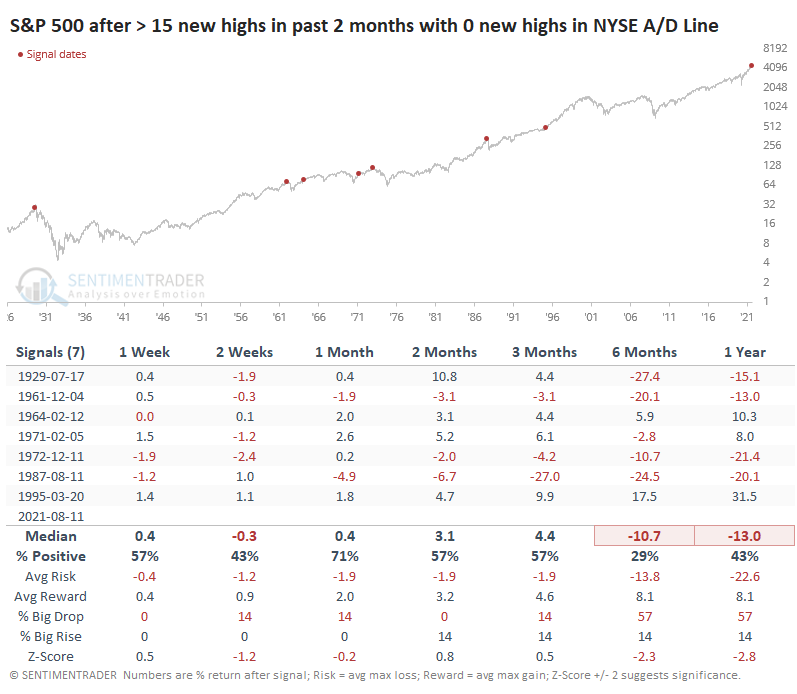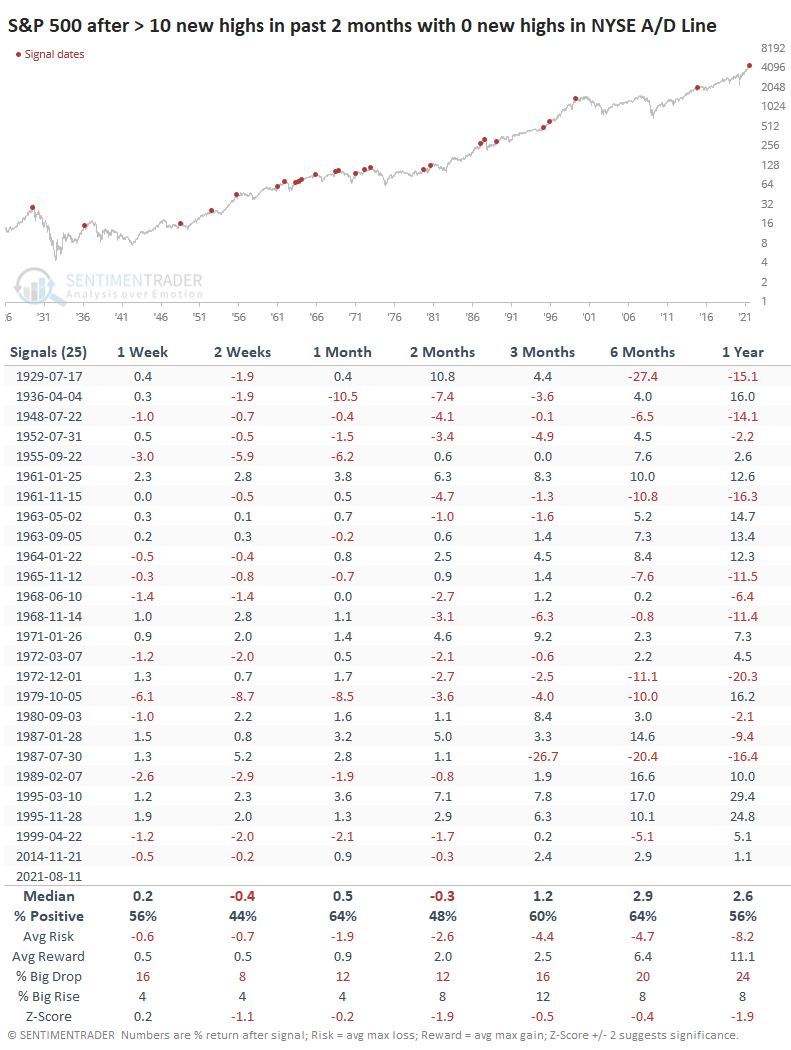As Stocks Creep Higher, No New Highs in Cumulative Breadth

In decades past, it used to be easy to feel like we had a grasp on what breadth was doing under the major market indexes. Simply ask whether the NYSE Cumulative Advance/Decline Line was hitting new highs or not.
If it was, along with the Dow Industrials or S&P 500, then everything was kosher. If not, well, then there could be trouble.
A while back, analysts started getting more sophisticated and rolled out a version of the A/D Line that only included common stocks, believing that divergences would be more useful (they're not). In recent years, computing power has expanded and access to data is unlike any period in history, so there are a bewildering number of choices to determine what "breadth" means.
KEEPING IT OLD SCHOOL
If we stick to the old school and simply look at the NYSE A/D Line, then things don't look too bad. It's hanging in there along with the major indexes. About the only potential negative is that it hasn't reached a new high for a couple of months. The S&P 500, meanwhile, has closed at a new high 18 times.

When we look at two-month windows (42 trading days) and tabulate how many 52-week highs the S&P 500 scored without any concurrent new highs in the A/D Line, this is the widest divergence in 25 years.

NOT A GREAT SIGN, WITH A MAJOR EXCEPTION
The last time the S&P scored so many new highs without a new high in the A/D Line was in 1995, which preceded one of the greatest runs in stock market history. It also triggered before a nice rally in 1964 (which ultimately failed). The other precedents, though, were not nearly as kind.

While the S&P managed to hold up most of the time over the medium-term, it ran into trouble over the next 6-12 months after 5 of the 7 signals.
If we relax the parameters to generate a larger sample size, then lesser divergences showed weak returns across all time frames, with tepid average returns, risk/reward ratios, and probabilities of a big drop vs. a big rise.

This is in direct contrast to the momentum-based price action we looked at several times last week. Nobody said markets were easy, and this is one of the more difficult periods we've witnessed in the past 20 years, with some wild cross-currents.
It would be better if the pure price momentum in the indexes was being accompanied by similar momentum in many of the breadth metrics. It's not ridiculously egregious like it was in 2000 or even 2015, but it's enough to cast a wary eye over the short- to medium-term as stocks creep higher with seemingly no repercussions.
Also, keep an eye on the (slightly) diverging Cumulative A/D Line for high-yield bonds, often a leading indicator for the stock market. And the weakening net percentage of bonds hitting 52 highs - 52 lows. When that's negative, stocks don't do great.

